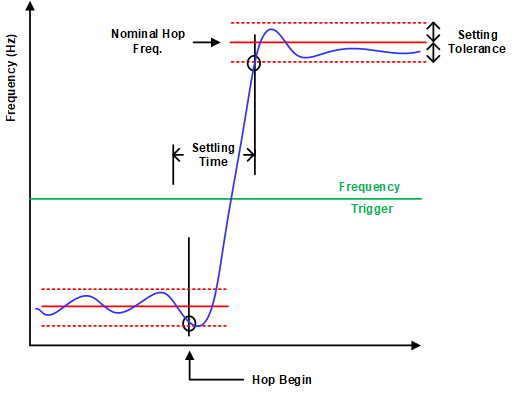SLAA870 February 2019 AFE7422 , AFE7444
-
Evaluating the frequency hopping capability of the AFE74xx
- Trademarks
- 1 Introduction
- 2 Phase Coherency vs Phase Continuity
- 3 AFE74xx Architecture
- 4 Frequency Hopping Methods
- 5 NCO Frequency Resolution Versus Hop Time
- 6 Fast Frequency Hopping With the Load and Switch
- 7 Register Addresses
- 8 References
4.2.1.2 AFE74xx DAC Settling Time
The DAC settling time is the time required for the DAC output to reach a final value within a specified percentage when hopping from one frequency to another. The DAC settling time has a direct impact on the total hop time. Figure 18 shows a model for the DAC settling time.
 Figure 18. Timing Model for DAC Settling Time
Figure 18. Timing Model for DAC Settling Time